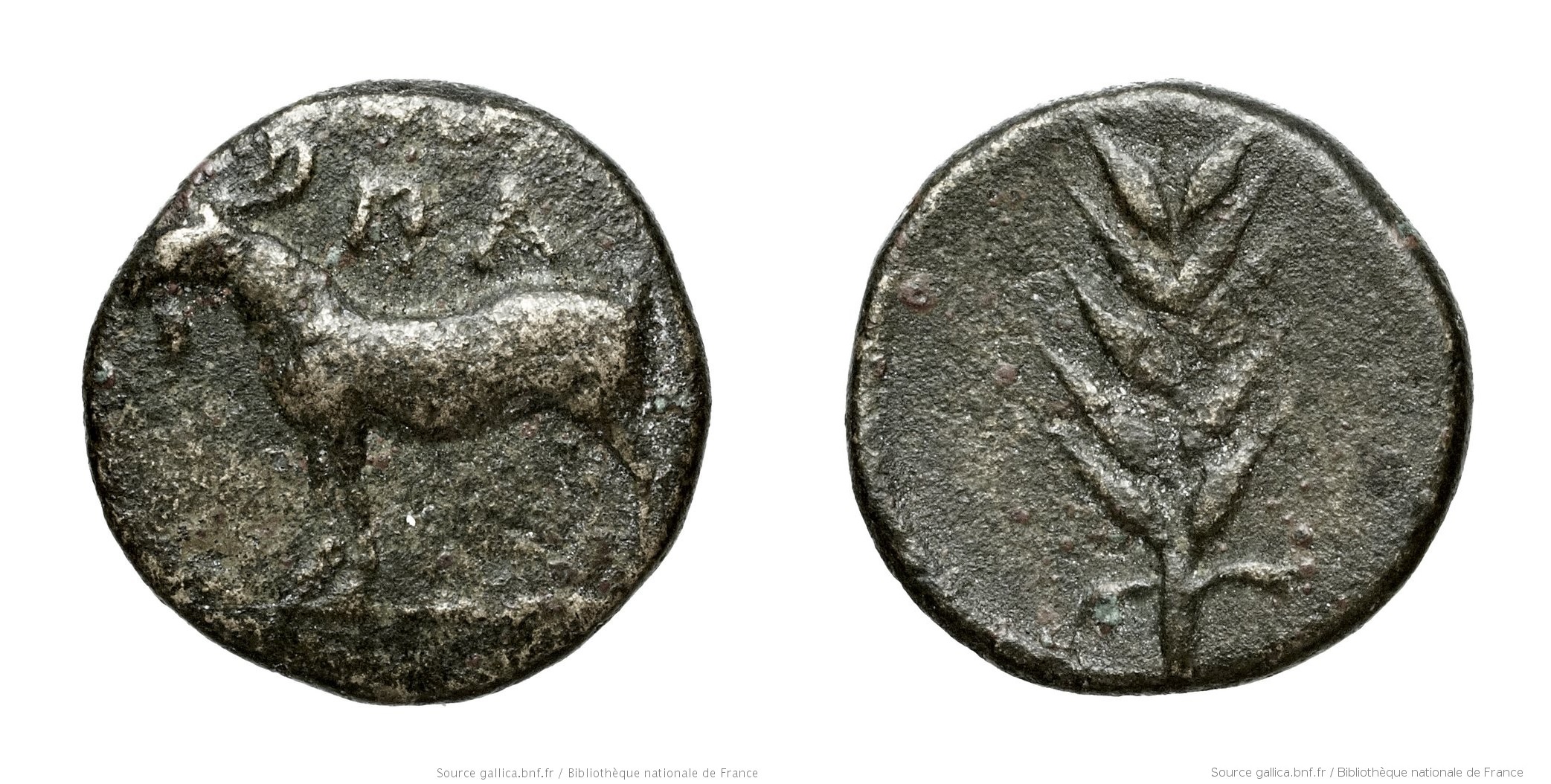S 701 - Paros, bronze, chalkous, 325-30 BC
From SILVER
325 BCE - 30 BCE Bronze
Description
| ObverseInscription or printing placed on the obverse.: | (ΠΑ) (Greek).Goat standing left |
| ReverseInscription or printing placed on the reverse.: | (ΠΑ) (Greek).Grain ear |
Mint and issuing power
| MintIdentifies the place of manufacture or issue of a numismatic object.: | Paros | Ancient regionAncient region.: | Cyclades | Modern countryModern country: Greece | AuthorityIdentifies the issuing power. The authority can be "pretended" when the name or the portrait of X is on the coin but he/she was not the issuing power. It can also be "uncertain" when there is no mention of X on the coin but he/she was the issuing power according to the historical sources: |
Chronology
| FromIdentifies the initial date in a range assigned in a numismatic context. | 325 BCE | toIdentifies the final date in a range assigned in a numismatic context.. | 30 BCE | PeriodTime period of the numismatic object.: Hellenistic 323-30 BC |
Physical description
| MetalThe physical material (usually metal) from which an object is made.: | Bronze |
Median weightMedian of the weights of numismatic objects (in grams). in grams | 2.20 | DenominationTerm indicating the value of a numismatic object. Examples: tetradrachm, chalkous, denarius.: | chalkous |
StandardStandard.: |
Image

S 701 Paros Chalkous 325-30.jpg [1]
References
| Die study referencePublication of the study: | Tully 20131Tully 2013, p. 89-103, series 1B.1-6. | ||
| Coin series referenceReference to coin series study: | |||
| Coin series web referenceCoin series web references: | |||
Obverse dies distribution
Reverse dies distribution
no distribution is available
Quantification
| Number of obversesNumber of obverse dies. ᵖ (o) | 98 | Number of singletons (o1)The number of singleton coins. ᵖ | 74 |
| Number of reverse diesNumber of reverse dies. (r) | 112 | Number of coinsNumber of coins. (n) | 143 |
| Coins per obverse dieNumber of coins per obverse die. (n/o) | 1.46 | Coins per reverse dieNumber of coins per reverse die. (n/r) | 1.28 |
| Reverse per obverse ratioRatio of obverse dies divided by reverse dies. (r/o) | 1.14 | Percentage of singletons (o1)number of coins (n) divided by the number of singletons (o1) ᵖ | 75.51 % |
| Original number of dies (O) (Carter 1983 formula)The estimation of the number of coins according to Carter 1983 ᵖ | 248.93 | Coins struck if 20,000 as average productivity per dieCoins made if the average productivity for obverses (according to Carter) is 20,000. ᵖ | 4,978,600 |
| Original number of dies (O) (Esty 2011 formula)The estimation of the number of coins according to the singleton formula in Esty 2011 ᵖ (O) | 311.42 | Survival rate if 20,000 as average productivity per dieSurvival rate if average productivity is 20,000. ᵖ | 0.00003 |
| Coverage (o = % of O) (Esty 1984 formula)Esty 1984 - coverage (% of O) ᵖ (o = % of O) | 48.25% | Die productivity if survival rate 1/2,000Average productivity if survival rate is 1/2,000. ᵖ | 1,148.92 |
| Weight of silver (in kg) if 20,000 coins per die (O = Carter formula)Carter 1983 * Median weight * 20000 (*10 if gold or electrum) ᵖ | n.a. | Die productivity if survival rate 1/5,000Average productivity if survival rate is 1/5,000. ᵖ | 2,872.29 |
Remarks
References
- ^ Tully, John A. N. Z. (2013), The Island Standard. The Classical, Hellenistic, and Roman Coinages of Paros, New York, xiv, 206 p., 27 pl.